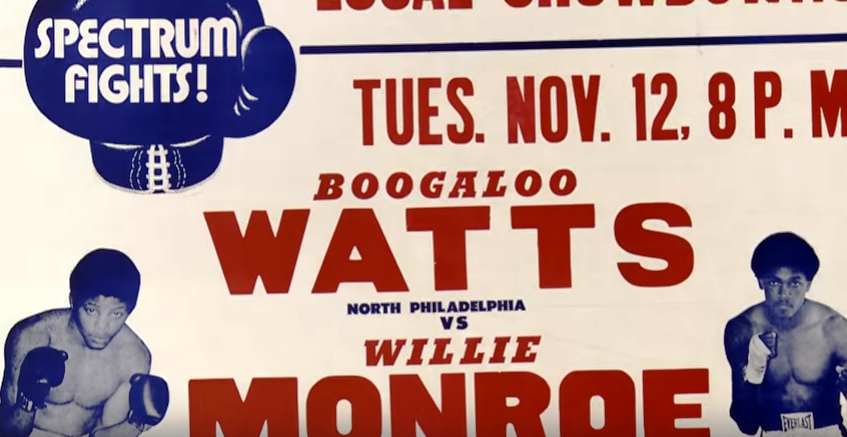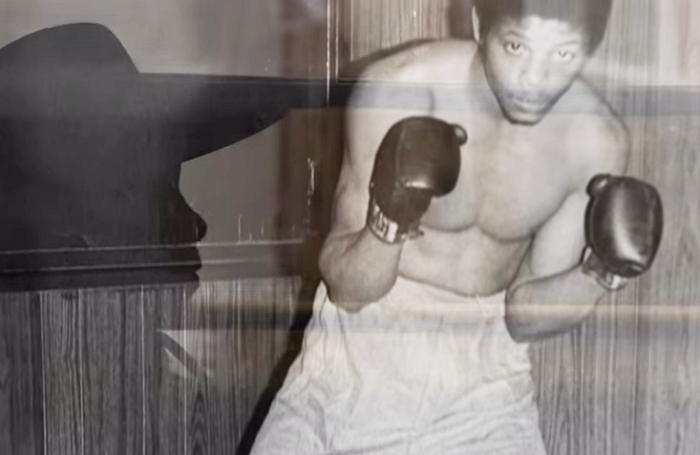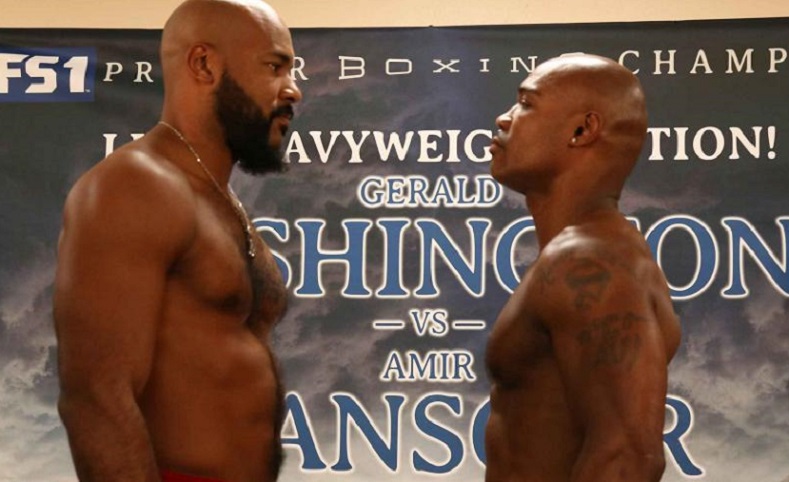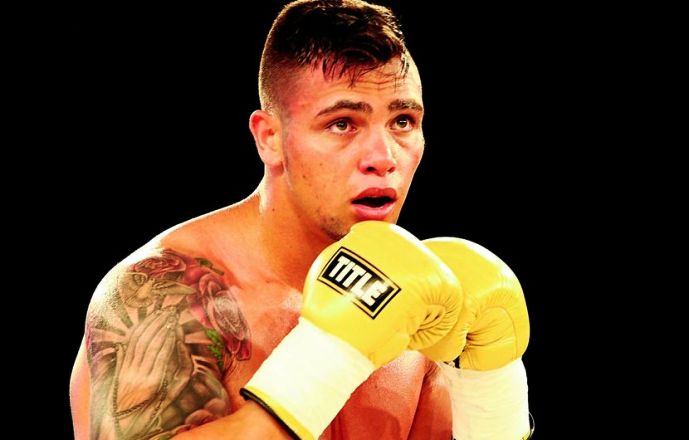Bobby “Boogaloo” Watts And The Philadelphia Middleweights
Bobby “Boogaloo” Watts is from a different era, a time when more often than not, fighters embraced challenges and took on all comers. It was the 1970’s and if you wanted to be someone in the middleweight division, you proved your worth by coming to Philadelphia to do battle.
“Boogaloo” laced up the gloves back when The City of Brotherly Love was buzzing with high-caliber talent at 160, warriors like Willie “The Worm” Monroe, Eugene “Cyclone” Hart, Stanley “Kitten” Hayward, and “Bad” Bennie Briscoe. All of the top 160 pounders in Philly were dangerous fighters who looked forward to matching skills; there was no consideration given to avoiding a difficult match because it was a badge of honor to be crowned “Philadelphia’s best.” These men had pride.
Over a two year stretch, Watts mixed it up with the best including “Cyclone” Hart, “The Worm” Monroe and the pride of Brockton, Massachusetts and future all-time great Marvelous Marvin Hagler. “Boogaloo” acknowledges the rivalry among Philadelphia fighters. “We were friends but all the Philadelphia middleweights were running in the same circles. You wanted to be the best so you knew eventually you would have to fight.”

And the place where all those great battles took place was the Philadelphia Spectrum. The fabled arena, now a memory as it was torn down in 2010, was home to so many excellent fights, including one of Boogaloo’s biggest wins, a first round knockout of “Cyclone” Hart.
Trainer and manager Augie Scimeca remembers the matchup fondly. “Bobby knocked ‘Cyclone’ out of the ring. He knew Hart had a good left hook, so he had to go out there and jump on him fast. That right hand Bobby’s got, if he hits you, you’re going to sleep.”
“Boogaloo” recalls it this way: “I was pumped up and angry with the whole world. Once that bell sounded, I knew it was going to be me or you. And I went right at him. My best combination was a left hook, right hand, then another left hook and right hand. But I embraced him after because I knew him well.”
Up next for “Boogaloo” was Willie “The Worm” Monroe, best known for his boxing ability and his tall, rangy physique. Watts knew he couldn’t let Monroe dictate the pace and both men landed their share of blows over the first four rounds. “The Worm” picked up the pace in the fifth and went after “Boogaloo” but Watts wasn’t fazed. He then came on over the second half of the match, taking full control in round eight after hurting “The Worm” with a vicious left hook. In a mild upset, Watts was awarded a well-earned ten round decision win.

“Willie was a very good fighter,” recalls Bobby. “I had to be cautious with him. But I was much quicker than he was and I hired a tall fighter to train with. He stunned me with a couple of big shots, but I beat him with counter-punching and speed.”
The third and final bout of this Spectrum trilogy pitted Watts against future Hall of Famer and all-time great, Marvelous Marvin Hagler. “Boogaloo” entered the contest at 26-3-1 with Hagler sporting a 25-0-1 record. Watts, who was a classic boxer/puncher, employed a fighting style of drawing the opponent in and countering, and this approach was effective against the future champion, with Bobby landing left hooks to the head and right hands to the body. Hagler fought out of a crouch, pursuing Watts with his familiar southpaw stance.
It was an entertaining and hard-fought ten round battle, with both men dishing out their share of punishment. Hagler took most of the early rounds but starting in the fifth, Watts picked up the pace. The second half of the match saw plenty of heated exchanges and the final result was a controversial majority decision victory for Watts. Promoter Russell Peltz, who was responsible for staging so many of the successful Spectrum shows in the 1970’s, reflects on the outcome:
“There’s no question it was a bad decision. The President of the Spectrum came down and talked to me and said ‘How could they do that?’ One of the headlines the next day was ‘Welcome to Philadelphia, Marvin Hagler!’ I apologized to Sam Silverman, Hagler’s promoter, after the fight. It was either six to four or seven to three for Hagler. And if it was six to four, you knew who had the six, no question about it. That said, it wasn’t the worst decision of all-time.”

“Boogaloo” on his win over Hagler: “I was sparring with heavy southpaws to get me ready. I pushed Marvin off and I would hold him and then move away to keep him on the outside. When he tried to get inside, I would tie him up. In the last two rounds, I knew I needed to box him to win and I knew I couldn’t let him get close. I connected with my left jab and right hand over the top and just kept moving.”
“Marvin looked very good in the fight,” continues Watts. “He was very aggressive and busy. And he was so strong. He knew what he wanted to do in the ring. And I knew during the fight he had a bright future.”
Watts would never get a world title shot. Today, after getting wins against dangerous battlers like Hart and Monroe, he would most likely be awarded a championship try, let alone after the triumph over Hagler. Does he hold any resentment that he never received a crack at the belt?

“I’m proud of what I did. Sometimes it’s who you know. And you have to know how to move your fighter. I beat two number one contenders. My opponents didn’t come the way I thought they should have. And I think I should have fought at more regular intervals. Maybe then I could’ve been more popular.”
After the Hagler bout, “Boogaloo” defeated a series of mediocre contenders before dropping losses to David Love and Mustafa Hamsho. In 1980 he faced Hagler in a rematch and Marvin stopped him in the second round. Later that year Hagler would go on to defeat Alan Minter for the undisputed world title.
After “Boogaloo” hung up the gloves, he knew he was going to stay in the sport and did so by training other boxers. Among the fighters Watts worked with were world champions Buster Drayton, Calvin Grove and Charles Brewer.
“I enjoyed working with the kids,” reflects Watts. “I taught them what I would do and everyone I trained went to the top. I worked with Brewer since he was 14-years-old and took him all the way to the title. Buster had a good, awkward style and he could punch. I had the experience to pass down and I taught them all I knew.”

When asked what it was like to have a Philadelphia boxing legend as his trainer, Brewer is nothing but grateful. “Boogaloo was a father figure to me in boxing. He talked to me like a parent would. My mom always wanted him to make sure I was okay, since I was just a kid. The end result of everything he taught me is I’m thankful to him.”
The legendary “Boogaloo” may have been the best of the Philadelphia middleweights in that era and certainly was in that two year period in the mid 1970’s. The fact he did not get a chance to win a world title is unfortunate, if not unjust. But the memories of what he was able to achieve at the Philadelphia Spectrum will not soon be forgotten.
Scimeca puts Watts’ career in perspective: “I learned from him. He taught me; I didn’t teach him. He knew what to do in the ring. It’s a shame Bobby is not in the Hall of Fame. We worked together and trusted each other and had a great time. I loved him.”
— Thad Moore





